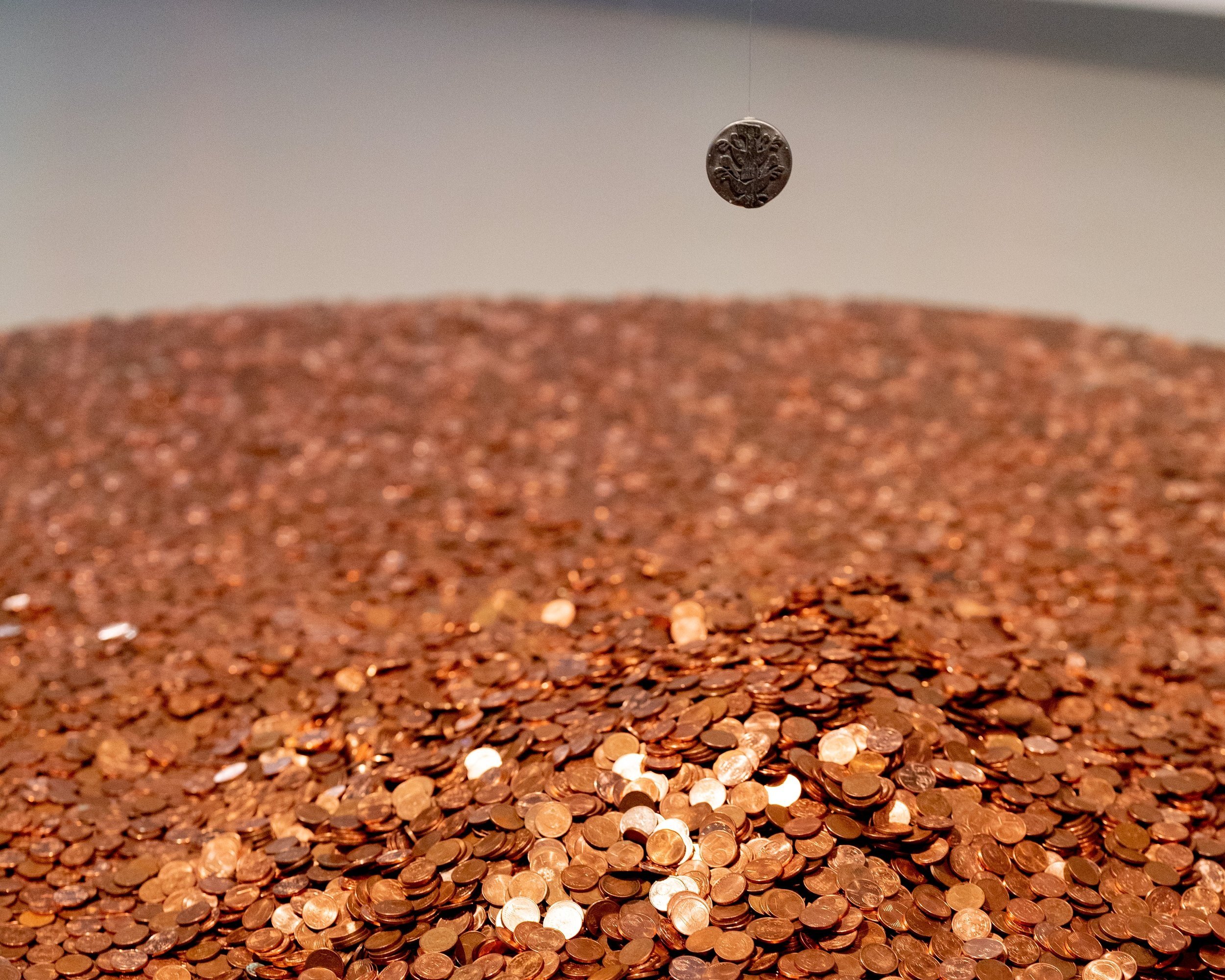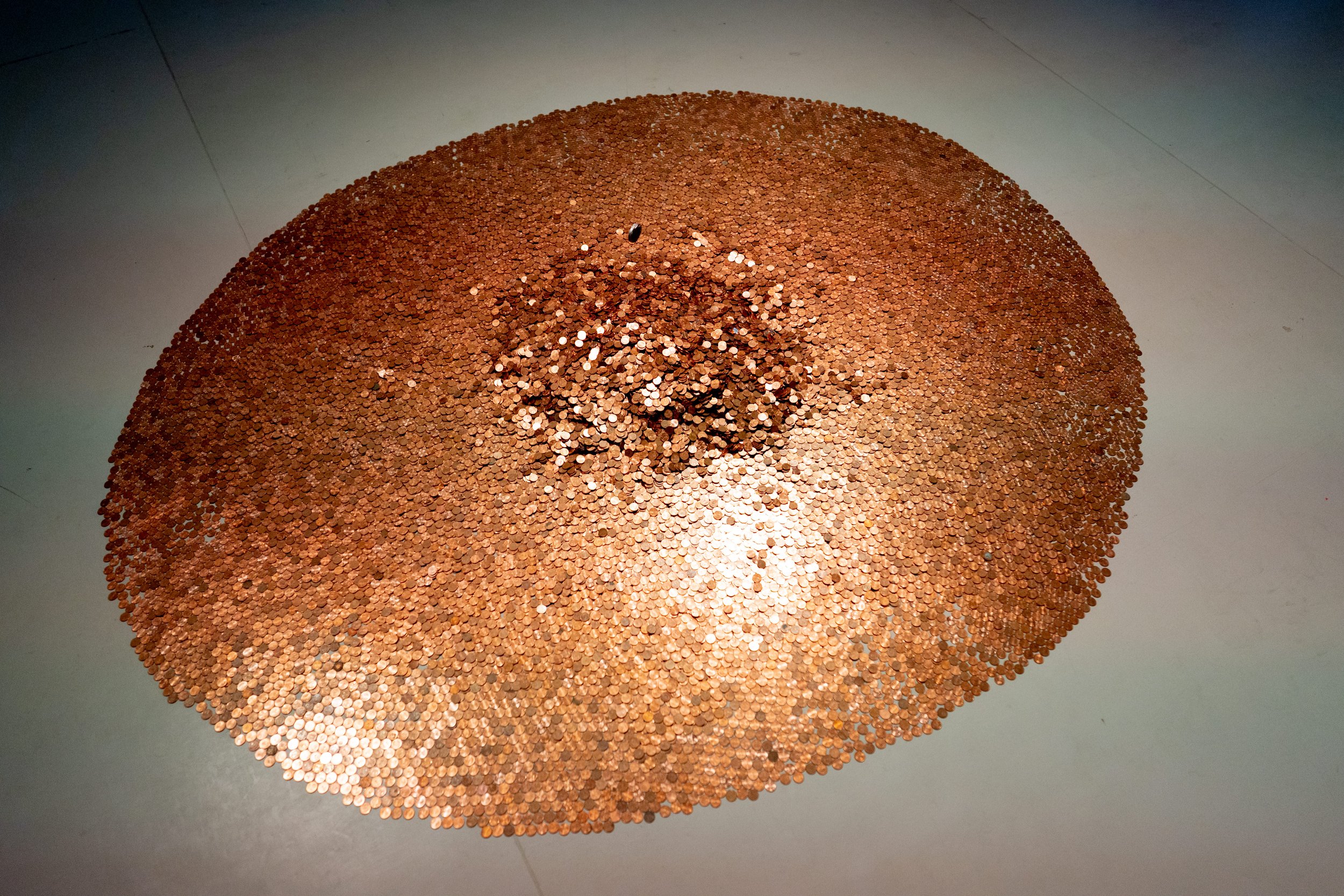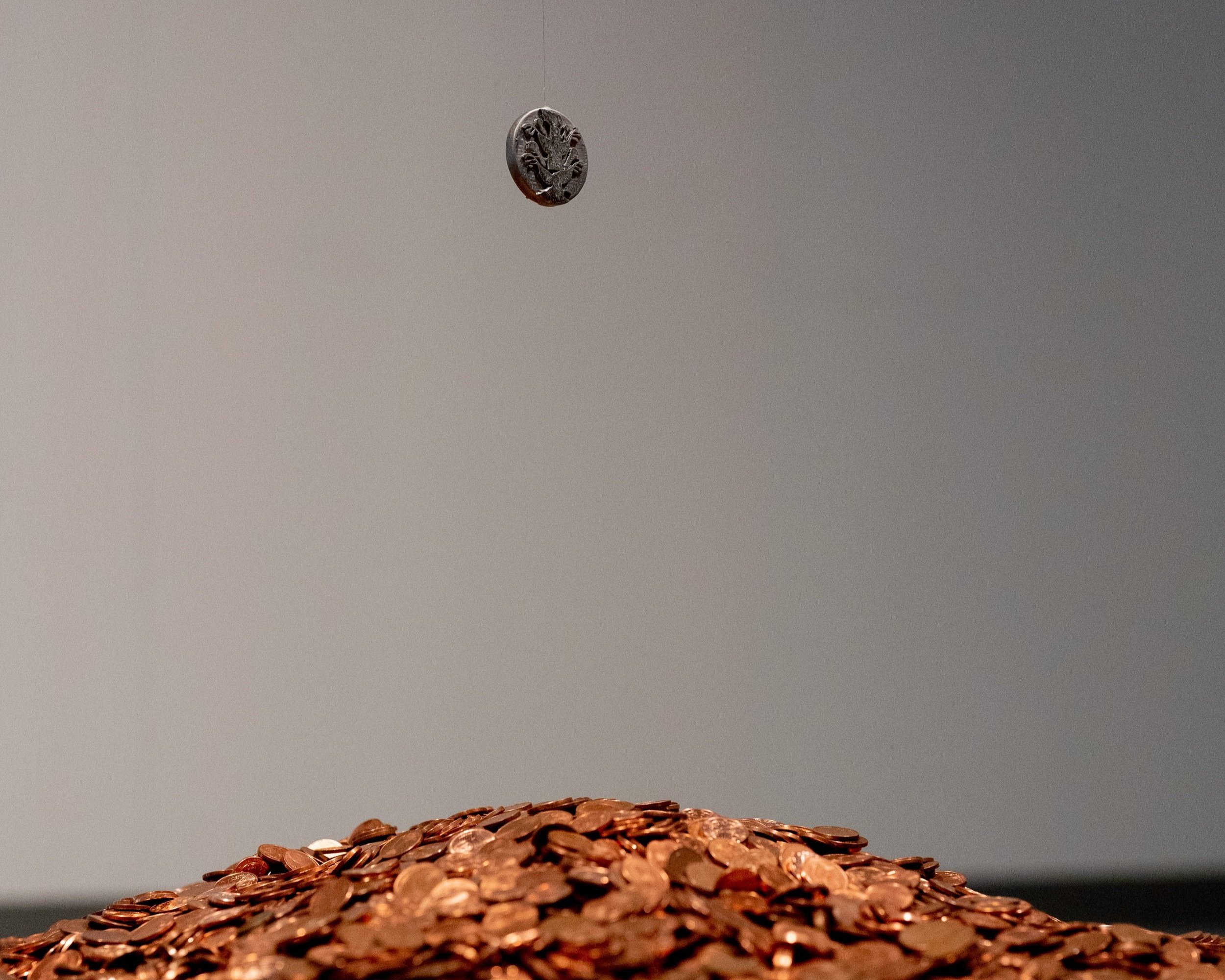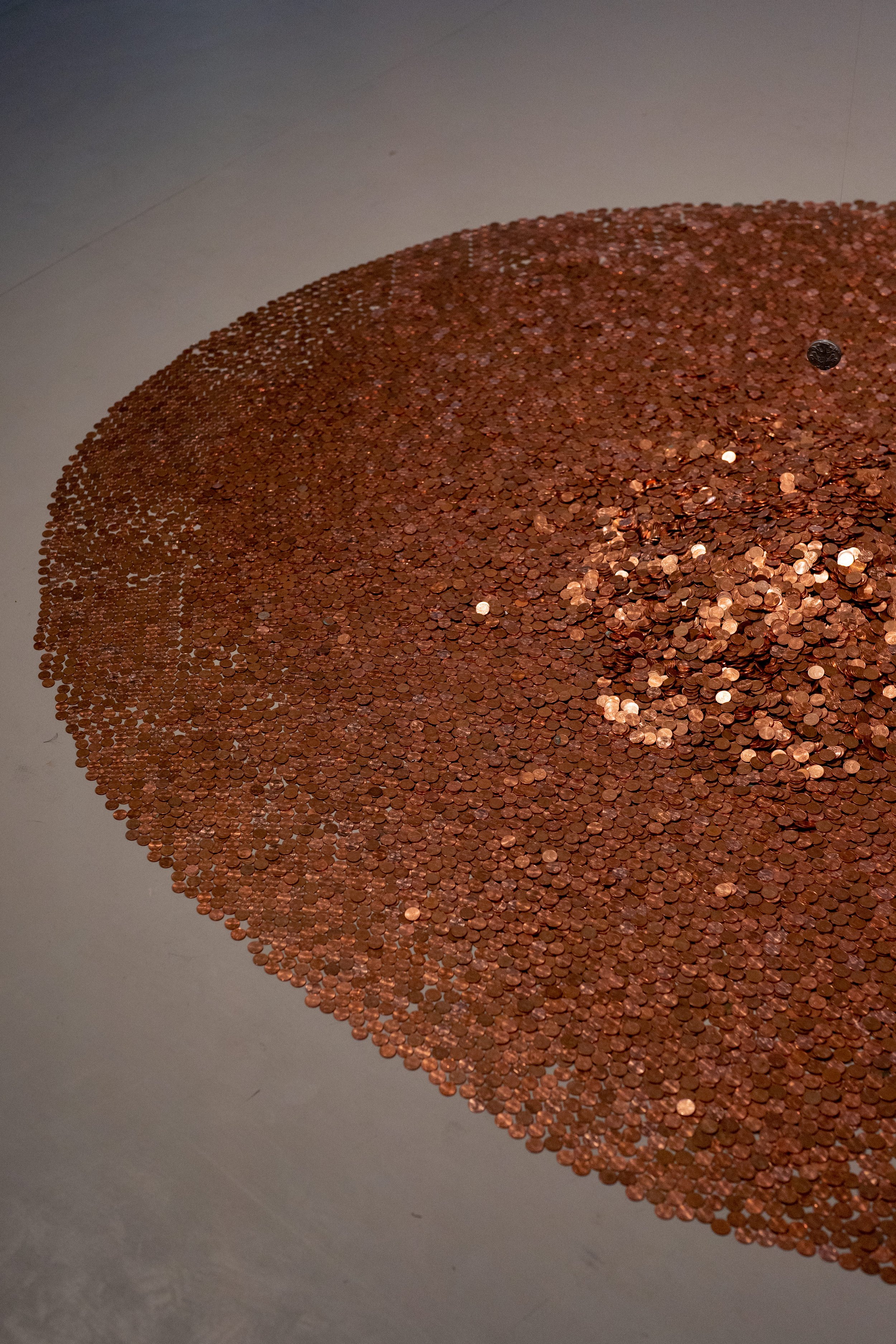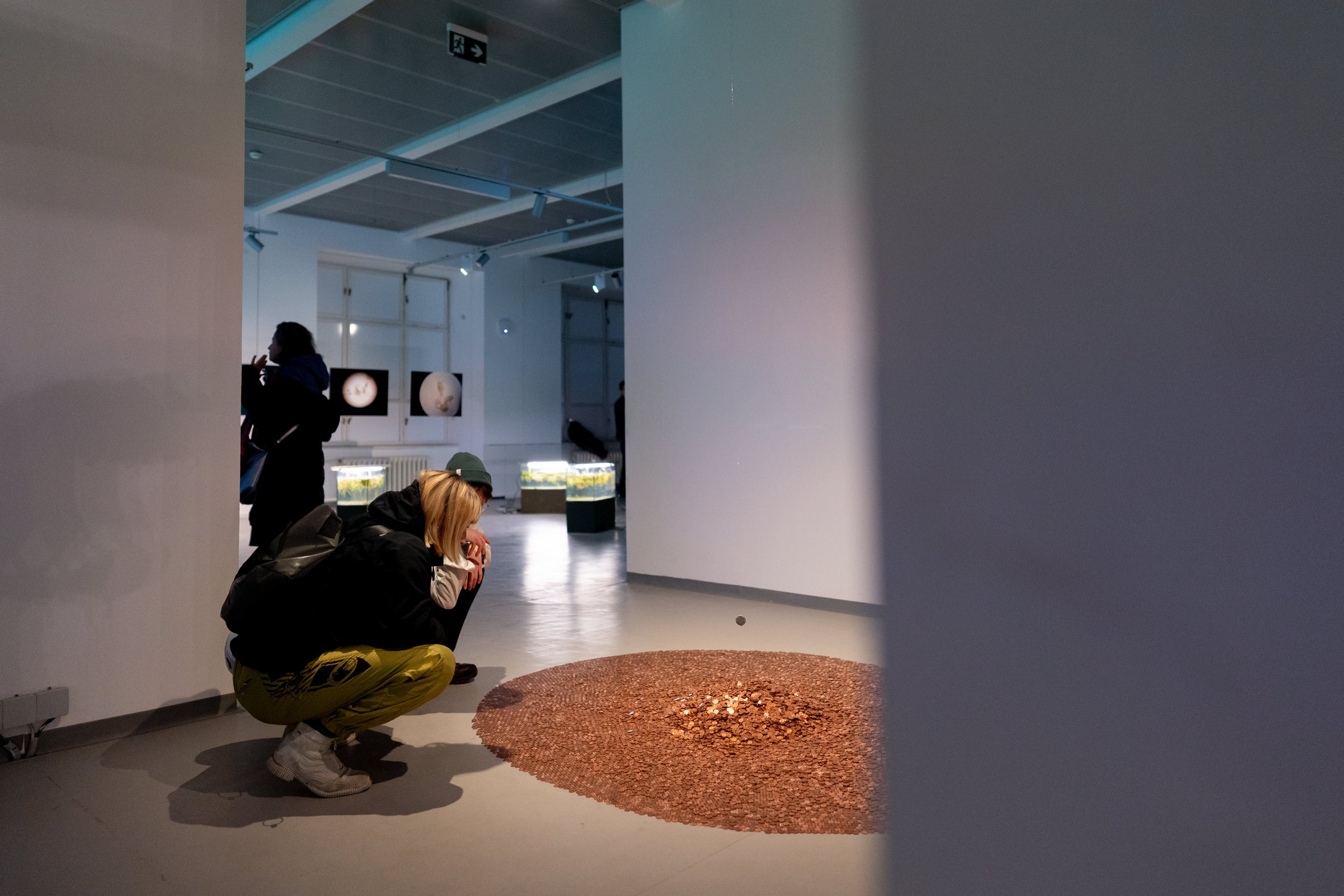
Rome Is No Longer In Rome, It Is Wherever I Am
Rome Is No Longer In Rome, It Is Wherever I Am (2023)
3d-printed coin, 48.964 1-cent euro coins
In 2021, a researcher from Istanbul University reported that a plant species believed to have been extinct for almost 2,000 years might have been found in central Turkey. The species, Ferula drudeana, closely resembles the plant once known as silphium. In the Roman Empire, silphium was sought after for its culinary and medicinal properties; historical accounts indicate that its sap gave a distinctive flavour to food, and that its juice could prevent pregnancies. Indeed, the plant was so valued that its image was minted in tetradrachm — large silver coins, equivalent to roughly four days of a labourer’s wage.
By late antiquity over-harvesting seemed to have rendered the plant extinct; it is said that Emperor Nero ate the last stalk. Yet, silphium survived. The images minted in silver coins, symbols of the commodification that extinguished the plant, provided a key lead in the recent identification of the specimens found in Turkey; a story where greed and survival dance around each other.
This installation, first exhibited at the Universität für angewandte Kunst Wien — located in a former bank — features a 3d-printed version of an ancient tetradrachm coin depicting a silphium stalk; the coin is a reproduction of the silphium tetradrachm in the collection of the British Museum. The 3d-printed coin is presented floating above 49.964 1-cent Euro coins — equivalent to four days of labour on a median salary in Austria, according to data collected in 2021. This interpretation of the tetradrachm coin, made from resin, will eventually become brittle and decay; the 1-cent Euro coins, made from copper-covered steel, will remain. Empires rise, empires fall.
Installation photos by Lea Dörl.
